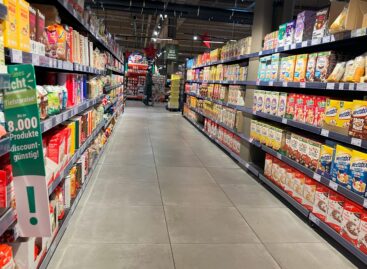Price caps are back on the agenda: What could this mean for customers and stores?
The announcement by the Minister of National Economy, Márton Nagy, on Monday caused a serious resonance in both public life and the commercial sector. The possible reintroduction of price caps is back on the agenda, which raises many questions for both consumers and stores, Pénzcentrum points out.
Why did the price cap come up again?
 According to the minister’s explanation, the rise in food and fuel prices justifies the re-discussion of the issue, and the government’s goal is to protect families. Although speculation has flared up following the announcement, Márton Nagy clarified that the possible new price cap would only apply to food and would not affect fuel. However, he has not yet revealed exactly which products could be subject to restrictions.
According to the minister’s explanation, the rise in food and fuel prices justifies the re-discussion of the issue, and the government’s goal is to protect families. Although speculation has flared up following the announcement, Márton Nagy clarified that the possible new price cap would only apply to food and would not affect fuel. However, he has not yet revealed exactly which products could be subject to restrictions.
What products were previously subject to price caps?
The price cap, introduced in the fall of 2021, affected several basic foodstuffs and was in effect for almost two years, until the summer of 2023. The following products were included in this category:
granulated sugar
wheat flour (BL 55)
refined sunflower cooking oil
homemade pork leg
chicken breast, chicken back, chicken back, chicken tail, chicken wing tip
ultra-high temperature heat-treated cow’s milk with a fat content of 2.8%
hen eggs
table potatoes (except new potatoes)
The price freeze meant that the price of these products could not be higher than the price valid on a given cut-off date. Now, it is questionable which products would be affected if the regulation were to be reintroduced.
How did retail react?
Players in the commercial sector did not welcome the announcement with great enthusiasm. A market expert told Pénzcentrum that the re-introduction of the price freeze would distort the operation of the free market and would also reduce the profits of stores. They also emphasized that margins on these staple foods are low anyway, so the measure would pose serious challenges to retail chains.
Related news
Price Cap on 30 Essential Food Products: Government’s Strategy to Curb Inflation
🎧 Hallgasd a cikket: Lejátszás Szünet Folytatás Leállítás Nyelv: Auto…
Read more >Why was the price stop brought up again?
🎧 Hallgasd a cikket: Lejátszás Szünet Folytatás Leállítás Nyelv: Auto…
Read more >Price caps and economic measures in Central Europe: more and more countries are protecting themselves against inflation
🎧 Hallgasd a cikket: Lejátszás Szünet Folytatás Leállítás Nyelv: Auto…
Read more >Related news
The New Year’s Eve fireworks fair is back: temporary sales will start in department store parking lots at the end of December
🎧 Hallgasd a cikket: Lejátszás Szünet Folytatás Leállítás Nyelv: Auto…
Read more >The first Eastern European non-alcoholic beer turns 50
🎧 Hallgasd a cikket: Lejátszás Szünet Folytatás Leállítás Nyelv: Auto…
Read more >Sausage: pork prices are already going down, but they won’t be cheaper in stores – a significant correction may come in the spring at the earliest
🎧 Hallgasd a cikket: Lejátszás Szünet Folytatás Leállítás Nyelv: Auto…
Read more >






